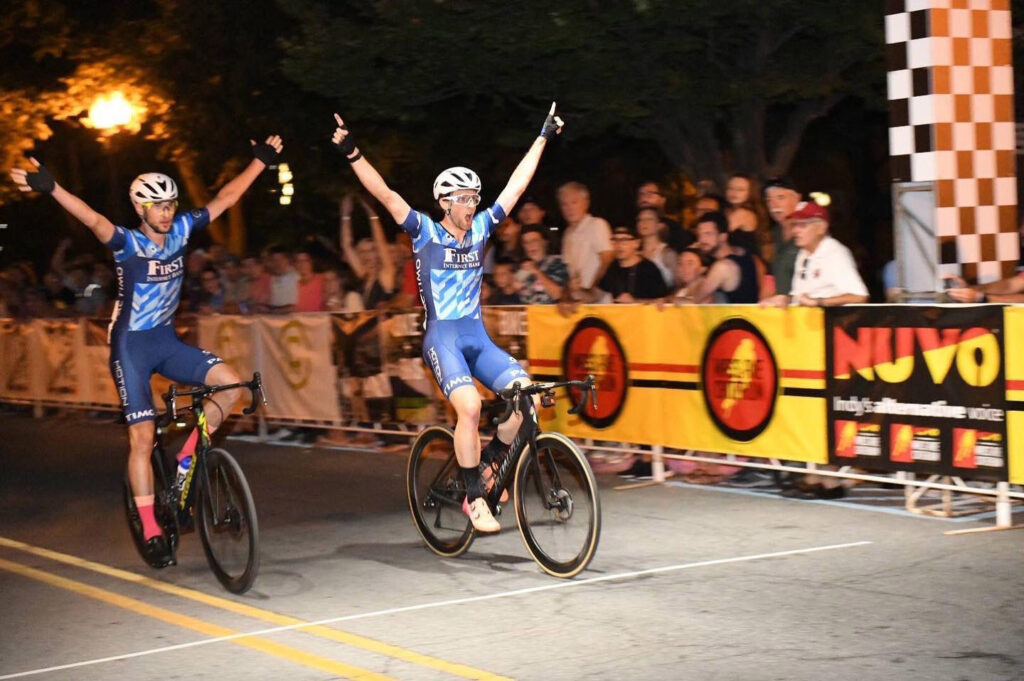A Season of Elite Road Racing With TrainerRoad Athlete Jarret Oldham
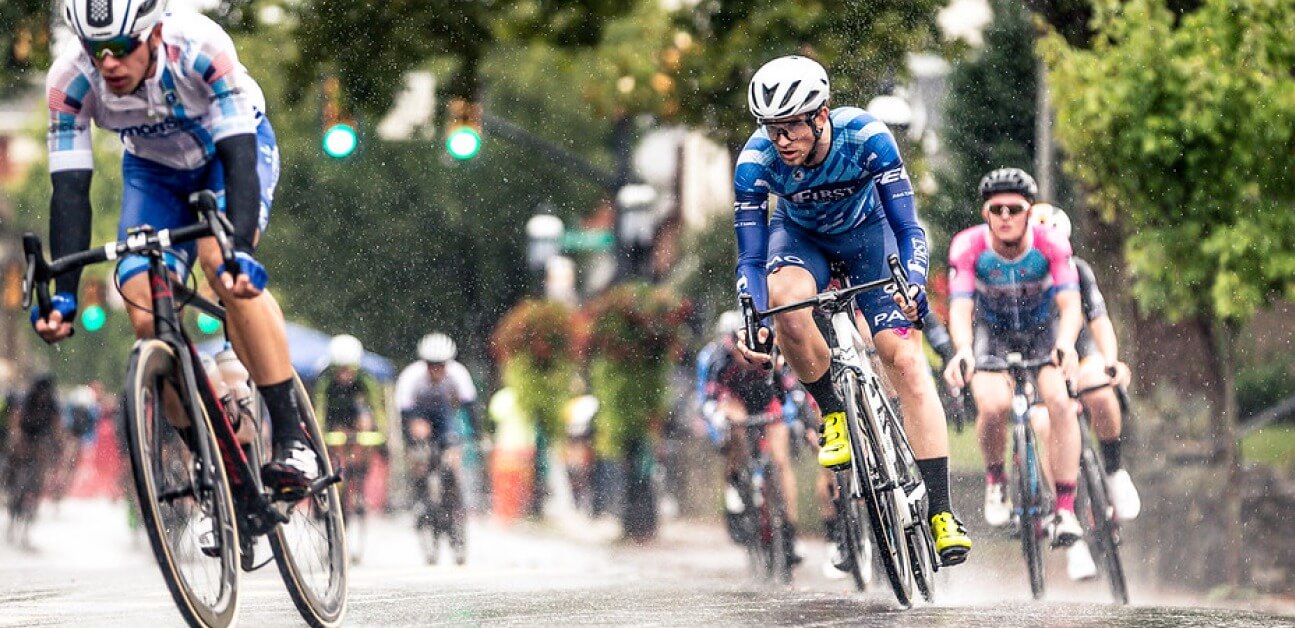
Jarret Oldham is seriously fast. With an awe-inspiring 5.5 w/kg FTP, this long-time TrainerRoad athlete is a fixture at the front of the toughest crits and road races in the United States. What’s it like using TrainerRoad to succeed in elite-level racing? Jarret walked us through the details of his dramatic 2019 road season to find out.
Hear more from Jarret in the Succesful Athletes Podcast EP 50.
Key Takeaways:
- Consistent, high-quality base training can result in race-ready fitness, and lays the groundwork for a long and successful season.
- When planning a race calendar, consider recovery and training time between events to avoid stagnation or burnout.
- Busy race seasons demand flexibility. Try to stick to your training plan but listen to your body when you don’t have motivation or need extra recovery.
- Go easy on yourself after injury. It’s natural to want to bounce right back, but healing takes time and rest.
- Keep things fun year-round to maintain motivation amidst hard work.
Starting a Season With Fun and Recovery
Jarret’s year of racing and training actually begins in the winter, with several weeks of recovery and rest. Many road racers take time off the bike during the autumn, immediately after racing ends. But Jarret opts for a few months of recreational riding before taking time off.
“Here in the midwest, the best time to ride is in the fall,” he says. “It’s fun, it’s pretty, and there’s no pressure, so I do whatever I want— group rides, mountain biking, some Strava segments, and a few local cyclocross races.”
This approach means a comparatively late start to base training, but it helps sustain an essential love of being on the bike. For the 2019 pre-season, Jarret started on a high note, winning the state cyclocross championships before hanging up his wheels for two weeks in early December.
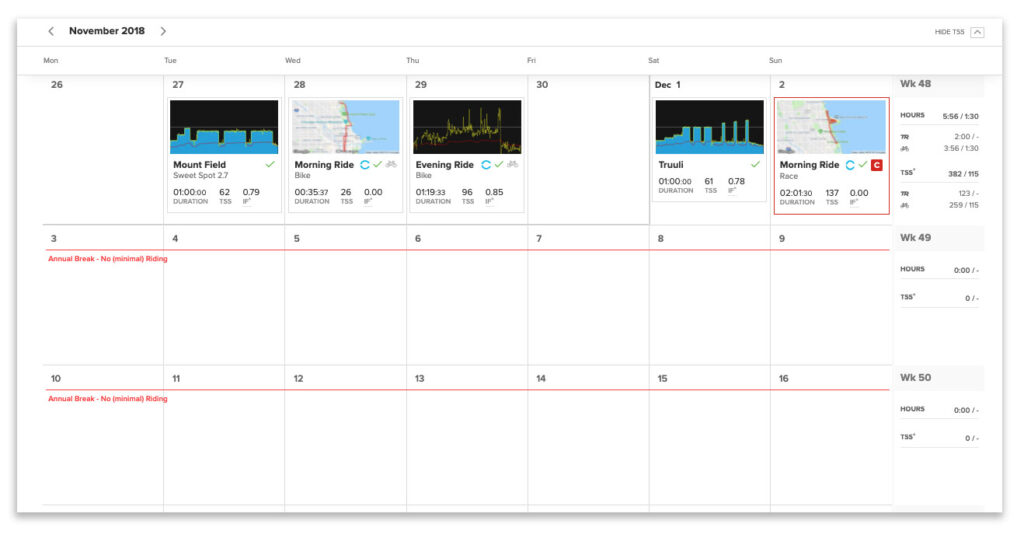
A Plan For The Upcoming Season
Jarret and his team begin planning the upcoming year during the winter offseason. Events are picked with several criteria in mind, including logistics, fun, and likelihood of success. Notably, races are also chosen to allow for recovery and blocks of productive training in between.
“Recovery between races is a huge factor,” Jarret explains. “Most elite-level racing is built into blocks of consecutive weekends or week after week. So it’s key to both recover, and then get some semblance of training to prepare for the next events. I try to find blocks of racing and alternate with blocks of training. Ideally, I plan it so I can race, get some rest, then string together about two weeks of productive intervals.”
Adaptive Training
Get the right workout, every time with training that adapts to you.
Check Out TrainerRoadBuilding a Foundation With Base Training
Jarret’s early-season training follows TrainerRoad’s high-volume Sweet Spot Base plan. For him, the early season is the single most important time to build fitness, free of the distractions and obligations of racing that arise later in the year.
“During race season, I follow a TrainerRoad plan, but I have to be more flexible, and I’m often moving things around a lot based on how I feel or how much recovery I need after a race,” Jarret says. “The advantage of base season is that the plan is pretty much set, and barring things like sickness I can stay consistent and build a strong foundation.”
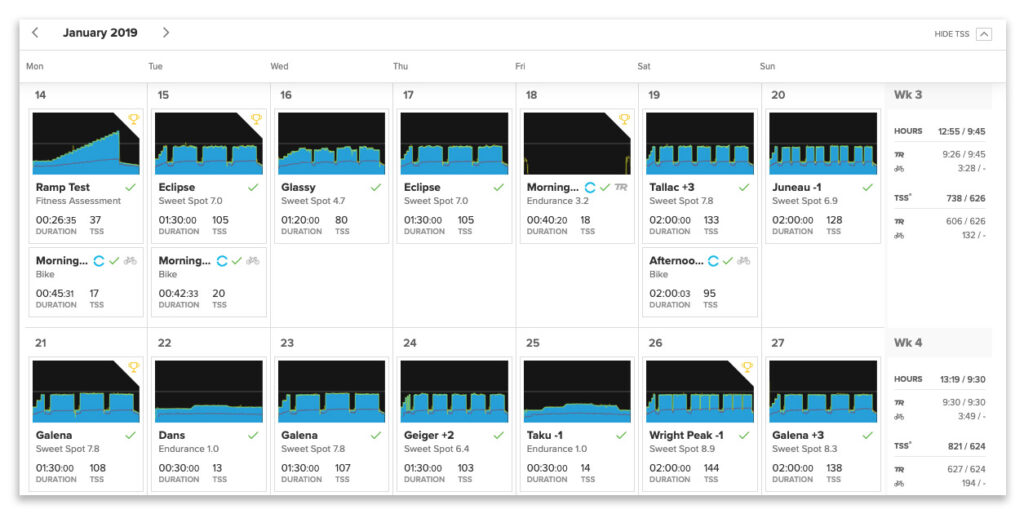
Jarret started his 2019 training plan with a Ramp Test, which measured his FTP at 363w. After a week of outdoor rides while visiting family for Christmas, virtually all of Jarret’s base training that year was completed indoors, on a smart trainer in ERG mode. While this was partly due to the restrictions of his work schedule and the challenging nature of Chicago’s winter weather, Jarret does see upsides to this approach.
“My natural strengths lie in shorter efforts, so I think I really benefit from doing a lot of sweet spot and aerobic work indoors in ERG, at constant load. It makes you super strong and helps build an ability to sustain steady power.”
Camaraderie and Training at Team Camp
By mid-February, seven weeks of consistent training had raised Jarret’s FTP to 407w. Three weeks before the first target event of the year (the Redlands Bicycle Classic) Jarret and his teammates from the First Internet Bank Cycling Team convened in Asheville, NC for a 5-day training camp.

Despite terrible weather, the team rode at a steady and challenging pace for 4-5 hours each day, logging almost 17 total hours on the road. The rides didn’t revolve around structured workouts or specific drills, but they did include some hard efforts and friendly attacks up the climbs.
“Our training camps are meant to build both culture and fitness. We typically meet a new member or two and build an aura of camaraderie in the team that’s really important. In 2019, Redlands was just a few weeks away and we were really motivated and down to business.”
After camp, Jarret returned home and completed a final week of hard training, before shifting into a week of recovery and endurance riding. Then he headed to California for the Redlands Bicycle Classic.
The Redlands Bicycle Classic (on Base Fitness)
Redlands is the longest-running stage race in the US. The grueling five-day event begins with a time trial, then includes a circuit race, a road race with a mountaintop finish, a criterium, and another road race.
Despite still being in the base phase of his training plan, Jarret’s fitness was excellent after several months of Sweet Spot and Endurance work, and he was more than ready to compete for results.
“You might not be as sharp as you will be later in the season, but base training makes you a diesel. You never get tired,” Jarret says. He brought this confidence to the opening TT, for which he borrowed his teammate’s time trial bike and placed second overall.
The next day, a teammate won the queen stage, and Jarret later managed 3rd in the criterium. Overall the week was a huge success. Beyond the results, the race was a productive block of training in and of itself and offered positive signs for the upcoming season.
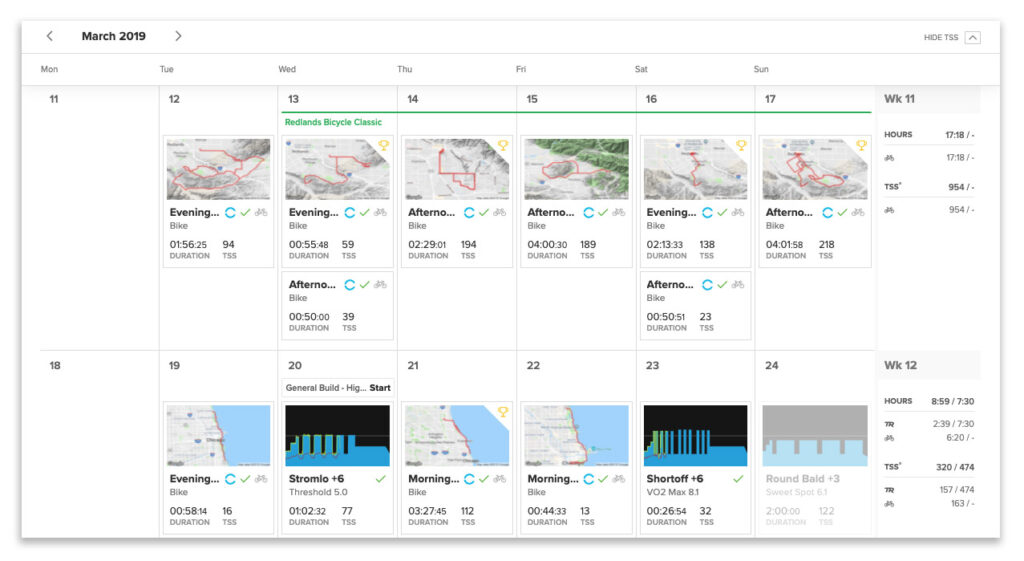
Team Tactics at Joe Martin Stage Race
With two weeks until the Joe Martin Stage Race, Jarret’s first task after Redlands was recovery. He attempted some tough workouts during the week that followed, but switched to endurance rides midway through, and skipped his Sunday workout entirely.
“I’m huge into data and numbers, but every data point has limitations,” explains Jarret. “Sometimes you just have to listen to your body and know when things aren’t right. That week I felt terrible. I needed the rest.”
After getting back in stride a week later, Jarret and his team headed to Arkansas for the four-day Joe Martin Stage Race, and it was soon clear Jarret’s additional recovery had worked. During the first day, Jarret helped set his teammate up for victory and the yellow jersey. Subsequent days were all about controlling the race, and by the final day, one of First Internet Bank’s riders sealed the overall win— a massive success for the team.
“Helping your teammate win a UCI stage race is huge. It felt like an individual victory,” Jarret remembers.
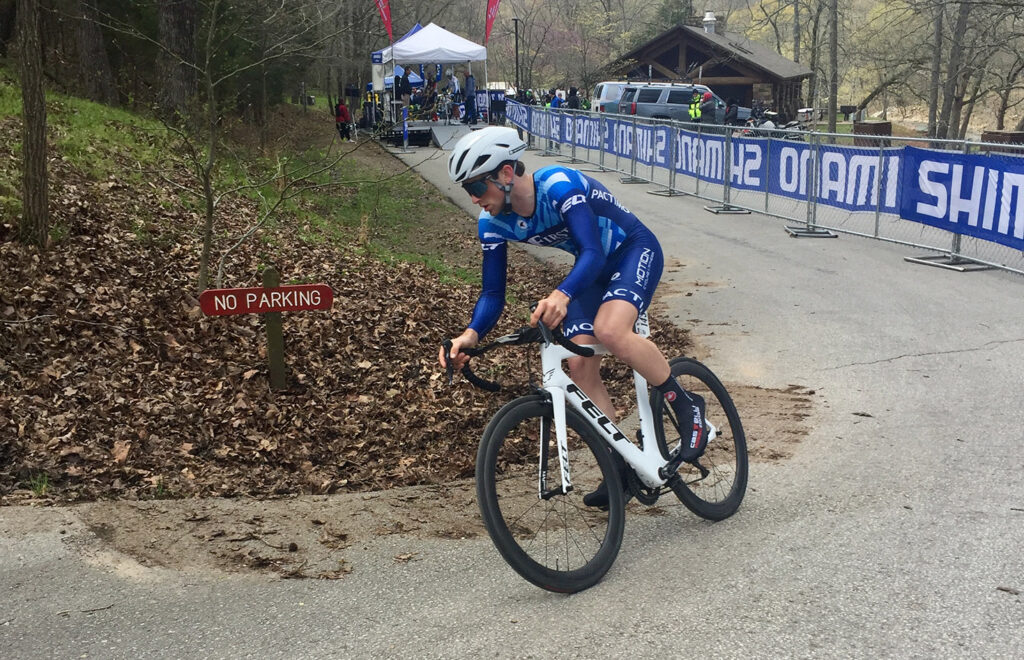
A Major Setback
Just as he did after Redlands, Jarret scheduled two weeks between Joe Martin and the team’s next target: Speed Week, a series of 5 criteriums including the famous Athens Twilight Crit. Unfortunately, disaster struck.
“The first race, someone swerved and put me into the fence. I broke my collarbone,” he recalls. “It was about as low as you can get. I went from the fastest I’ve ever been with some major results, to being on the ground.”
Jarret had surgery just under a week later and started easy riding on the trainer the week after that. But it was uncomfortable, and he also got sick— a tough start to what turned out to be a very challenging recovery. Finally, three weeks after his crash, Jarret restarted Sweet Spot Base and got back to work.
“I was hungry. I wanted to get back in shape for Nationals, but it was hard because of the inability to put full weight on my arm,” he says. “Even once I could, I felt like I had more bad days than ever after that injury. Everything just seemed to take more energy after that.”
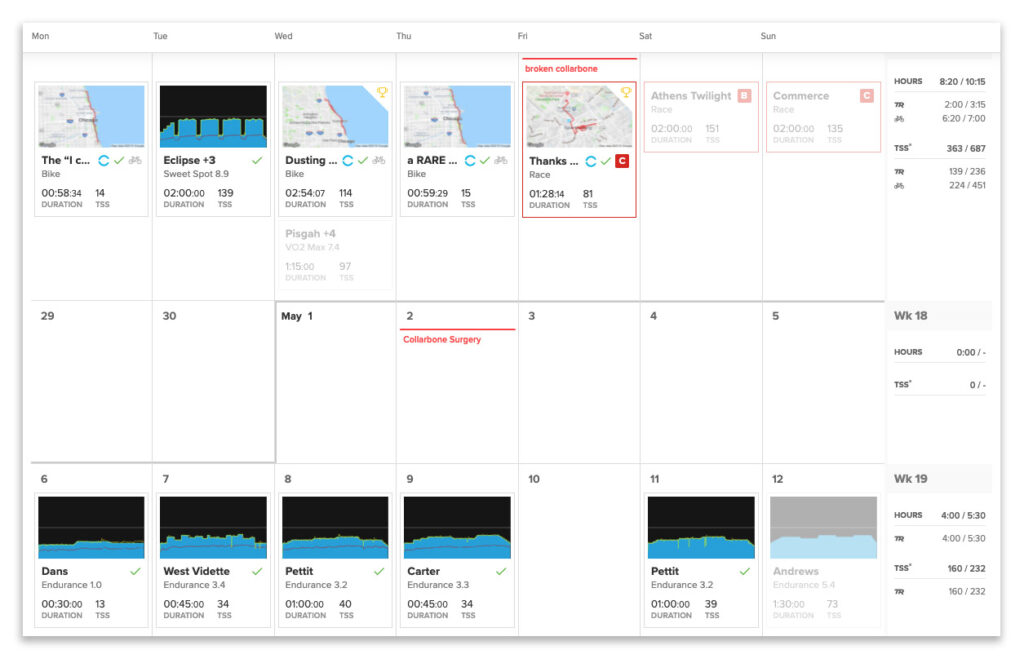
A Successful Return With Lessons for Every Athlete
Seven weeks to the day after breaking his collarbone, Jarret won his first race back, the Tour of Grandview in Ohio. The following week was the amateur national championships, where Jarret individually took 9th in the time trial and helped his team sweep the road race podium. A week later at the US professional road race championship, the team again turned heads, with Jarret’s teammate Stephen Bassett finishing second and sharing the podium with two world tour riders.
The results capped off a season of incredible highs and lows. While Jarret’s physical gift for riding a bike is exceptional, the trials and tribulations of competition are the same at every level of the sport. In the end, it’s Jarret’s dedication to consistency, his diligent attention to detail in scheduling and planning, and his willingness to listen to his body that make the biggest difference of all.
So whether you’re an elite athlete or an absolute beginner, keep Jarret’s successes and setbacks in mind. His strategies for handling the ups and downs of racing can help make you faster, and can help you stay motivated when things don’t always go as planned.
